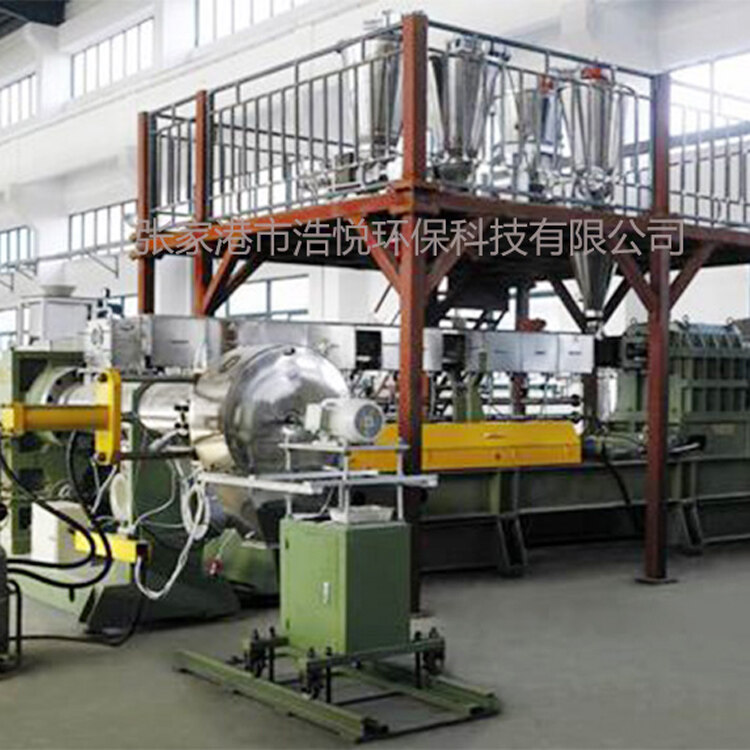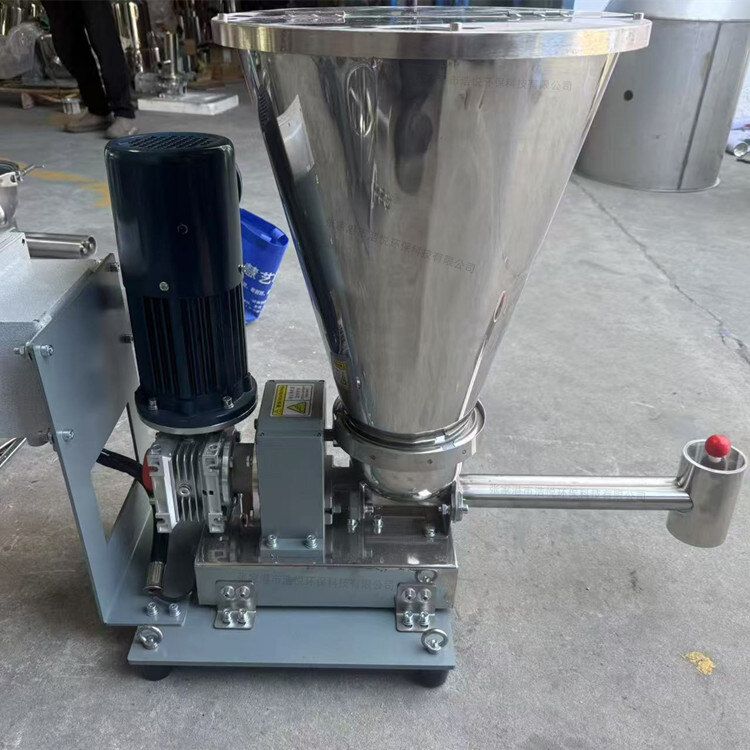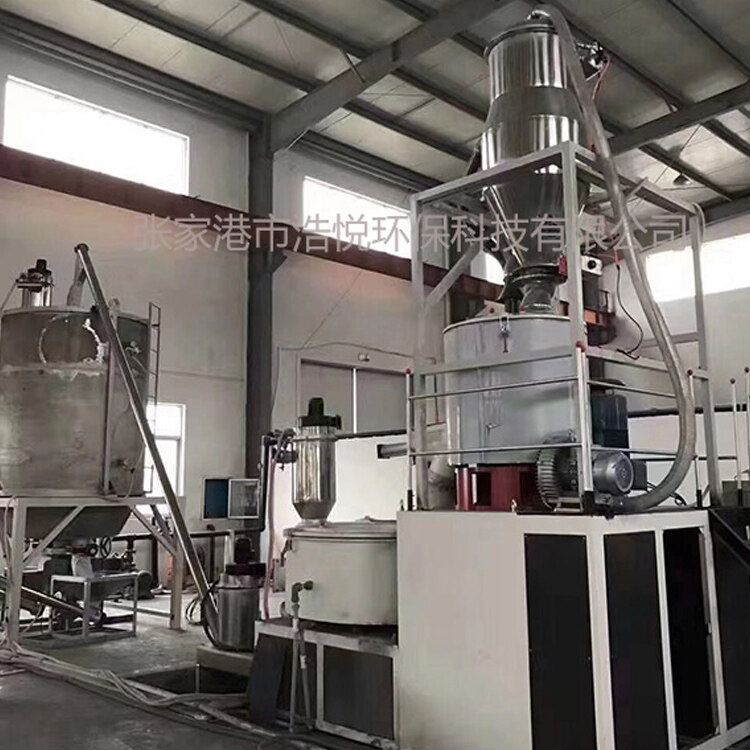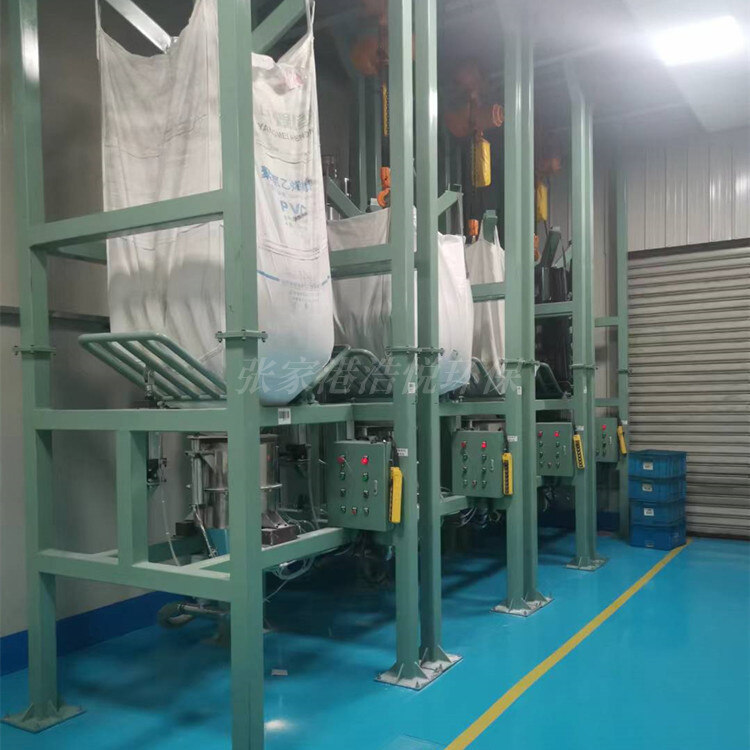- Introduction to automatic batching machine and fully automatic batching machine equipment
- The powder metering system tells you about the introduction of the mixing and drying machine
- 1000kg vacuum feeding machine
- Fully automatic small material batching system
- Research on Innovation of Automatic Weighing Machine Technology
- Design and operation of automatic batching system using PLC, industrial computer and frequency converter
Measurement weight loss scale
- Category:Weightlessness scale
- Hits:127次
- Release Date:2025-06-30
- Share:
- Inquiry
- Details
Under the strict requirements of modern industrial production for precise material measurement, the weight loss scale, as a core equipment that integrates high-precision measurement and stable feeding, plays a key role in various fields such as chemical engineering, food, and building materials. It is based on the unique principle of "weightlessness measurement", which provides reliable measurement guarantee for the production process by monitoring the weight changes of materials in real time, accurately controlling the material flow rate. Next, I will provide a comprehensive and in-depth introduction to the weighing scale from the aspects of working principle, system composition, core advantages, application practice, and development direction.
1、 The working principle of measuring weightlessness scale
The core of measuring weightlessness lies in achieving dynamic and accurate measurement based on the principle of "weightlessness measurement". When the equipment is running, the material bin for loading materials is placed on a high-precision weighing sensor, which continuously collects the total weight data of the bin and materials and transmits it in real time to the control system. As the feeding mechanism is activated, the material is continuously transported to downstream equipment, and the weight of the material in the silo gradually decreases. The weighing sensor will also continue to capture this weight change process.
The control system will conduct in-depth analysis and calculation of weight change data based on the preset material flow target value. Once the actual weight change rate deviates from the target flow rate, the control system will quickly and automatically adjust the operating parameters of the feeding mechanism. For example, if the material output speed is detected to be too fast, causing the weight reduction rate to exceed the target value, the control system will reduce the speed of the screw feeder or the operating speed of the belt feeder; On the contrary, increase the speed to ensure that the output flow rate of the material remains consistent with the set value. This dynamic measurement method based on real-time weight changes effectively overcomes errors caused by material characteristic fluctuations, equipment wear, and other factors in traditional measurement methods, and can provide high-precision and highly reliable measurement data for production.
2、 System core composition architecture
The weight loss measurement scale is mainly composed of five core modules: weighing system, silo, feeding mechanism, control system, and frame. Each module works together to build a complete measurement and conveying system.
(1) Weighing system
The weighing system is the key to achieving accurate measurement of weightlessness, consisting of high-precision weighing sensors, signal processing modules, and weighing platforms. Strain gauges or electromagnetic force balance sensors are commonly used in weighing sensors, with an accuracy of ± 0.1% - ± 0.5%. They can keenly sense subtle changes in the weight of materials in the silo and accurately convert the weight signal into an electrical signal output. The signal processing module will amplify, filter, and convert the weak electrical signal output by the weighing sensor, effectively improving the stability and accuracy of the signal, and then transmit the processed data to the control system. The weighing platform is used to carry the silo and materials, and has good rigidity and stability in structural design, which can effectively resist external vibration, impact and other interference factors, ensuring the accuracy of the weighing process.
(2) Storage bin
The silo is mainly used to store materials to be measured and transported, and its capacity is designed according to actual production needs, usually ranging from a few hundred kilograms to several tons. The shape and structure of the silo will be optimized according to the flowability, particle size, humidity and other characteristics of the material, commonly including conical and square shapes. To ensure smooth material discharge, the inner wall of the silo is generally polished to reduce the friction between the material and the silo wall; For materials with poor fluidity, stirrers, arch breaking devices or vibrators will be added inside the silo to effectively prevent material clumping and bridging, ensuring that the material can enter the feeding mechanism uniformly and stably.
(3) Feeding mechanism
The feeding mechanism is responsible for the important task of conveying the materials in the silo to downstream equipment according to the set flow rate. According to the characteristics of the materials and production process requirements, it is mainly divided into the following types: spiral feeders are suitable for powdery and small granular materials. The materials are pushed out and conveyed by the rotation of the spiral blades, and the material flow rate can be accurately controlled by adjusting the speed of the spiral shaft; Belt feeders are commonly used to transport materials with larger particles and better flowability. The belt runs at a constant speed under the drive of the rollers to transport materials, and the feeding amount can be controlled by changing the belt speed or adjusting the thickness of the material layer; The vibration feeder utilizes the vibration generated by the vibration motor to achieve uniform feeding of materials in a jumping motion on the hopper. It is suitable for materials that are sensitive to damage and can control the material flow rate by adjusting the vibration frequency and amplitude.
(4) Control system
The control system is based on PLC (Programmable Logic Controller) or industrial computer, equipped with dedicated control software and human-machine interface (HMI). The operator inputs information such as the target flow rate of the material, initial weight of the silo, and operating parameters of the feeding mechanism through the HMI. During the operation of the system, it will receive real-time weight data feedback from the weighing system, compare it with the preset flow target, and automatically adjust the operating status of the feeding mechanism according to the deviation, forming a closed-loop control. In addition, the control system also has functions such as fault diagnosis, alarm prompts, data recording, and storage. When the equipment experiences faults such as abnormal weighing sensors, blockage of feeding mechanisms, or material interruption, the system will immediately issue sound and light alarms and record detailed fault information for maintenance personnel to quickly locate and solve the problem; At the same time, it can also generate historical data reports, recording information such as material usage, feeding speed, equipment operation time, etc., providing strong basis for production management and cost accounting.
(5) Rack
As the frame structure supporting the entire weighing system, the rack is generally made of high-strength steel through welding or bolt connection, with sufficient strength and rigidity to withstand the weight of the silo and materials, as well as the vibration generated during equipment operation. In the design process, the rack fully considers the equipment installation space, maintenance convenience, and docking requirements with upstream and downstream equipment, ensuring stable operation and easy operation and maintenance of the weighing system.
3、 Core technological advantages
(1) Ultra high measurement accuracy
The weight loss measurement scale, with its real-time monitoring of material weight changes and dynamic adjustment, can effectively overcome the impact of material characteristic fluctuations, equipment wear, and other factors on measurement accuracy. In scenarios such as catalyst addition in the chemical industry and raw material proportioning in the food industry that require high precision, the measurement error can be controlled within ± 0.5%, and in some high-end application scenarios, it can even reach ± 0.1%, providing a solid guarantee for the stability of product quality. For example, in a high-end coating production enterprise, a weight loss scale is used to measure pigments and additives, making the color and performance of each batch of coatings highly consistent, greatly enhancing the market competitiveness of the product.
(2) Stable and reliable continuous feeding
This equipment can automatically and flexibly adjust the feeding speed according to production needs, ensuring that materials are continuously and stably transported to downstream equipment, effectively avoiding situations such as material interruption or uneven feeding. Even if there are certain changes in material characteristics, such as humidity and particle size fluctuations, the weight loss scale can maintain a stable flow output through adaptive adjustment. On the biscuit production line of a large food processing plant, the weight loss measuring scale continuously and stably supplies flour, sugar and other raw materials to the mixing equipment, ensuring 24-hour uninterrupted and efficient operation of the production line.
(3) Strong material adaptability
The weight loss measurement scale can be widely applied to various forms of materials such as powder, particle, and block, and can flexibly adjust the silo structure and feeding method according to the characteristics of different materials. Whether it is granular materials with good fluidity or powdery materials with high viscosity and easy agglomeration, good metering and conveying effects can be achieved. In the feed production industry, the weight loss measuring scale can accurately measure and stably transport granular materials such as corn and soybean meal, as well as powdered materials such as premix, to meet the diverse needs of feed formulations.
(4) Highly intelligent and automated operation
The weight loss measurement scale has a highly automated operation capability. Operators only need to set relevant parameters on the human-machine interface, and the equipment can automatically complete the material measurement and transportation tasks, significantly reducing manual intervention and effectively reducing labor intensity and human errors. At the same time, the intelligent control system supports remote monitoring and data transmission. Management personnel can view the real-time operation status of equipment and adjust parameters through the network, achieving intelligent management of the production process. A certain chemical enterprise discovered and dealt with equipment failures in a timely manner through remote monitoring of weight loss scales, avoiding production losses caused by equipment downtime and improving the efficiency of production management in the enterprise.
4、 Application scenarios
(1) Chemical industry
In the production process of chemical products such as coatings, inks, plastics, rubber, etc., the weight loss measurement scale is used to accurately measure and continuously feed raw materials such as resins, pigments, additives, catalysts, etc. In the production of plastic pipes, the precise control of the amount of plastic particles and masterbatch added is achieved through the use of a weight loss scale, ensuring uniform color and stable performance of the pipes, and improving the product qualification rate.
(2) Food industry
In the field of food processing, weight loss measurement is used to accurately ratio and quantitatively transport various raw materials, such as flour, sugar, salt, milk powder, additives, etc. In the production of baked goods, it can strictly control the amount of raw materials input according to the formula, ensuring consistent taste and quality of bread, cakes and other foods, while meeting food safety and hygiene requirements.
(3) Building materials industry
In the production process of building materials such as cement, concrete, dry powder mortar, gypsum board, etc., the weight loss measurement scale is used for measuring and feeding materials such as cement, sand and gravel, fly ash, additives, etc. At the commercial concrete mixing plant, the precise control of the ratio of various aggregates and cement is achieved by measuring the weight loss scale, ensuring that the concrete grade meets the requirements and improving the strength and durability of building materials products.
(4) Pharmaceutical industry
In the process of drug production, the weight loss scale is used to accurately measure the active ingredients, excipients, and other materials of the drug, ensuring the accuracy and stability of the drug ingredients and meeting the requirements of GMP (Good Manufacturing Practice). In the production of solid dosage forms, precise control of the dosage of materials such as drug powder and adhesive ensures reliable drug quality and guarantees patient medication safety.
5、 Development Trends
In the future, the measurement of weightlessness will develop towards higher accuracy, intelligence, integration, and greenization. In terms of precision improvement, by developing new high-precision weighing sensors, optimizing control algorithms, and adopting advanced signal processing technology, measurement errors are further reduced to meet the measurement needs of nanoscale and trace materials; In terms of intelligence, the introduction of artificial intelligence and machine learning technology enables devices to have self-learning, self diagnosis, and adaptive capabilities, and can automatically optimize operating parameters based on material characteristics and production data; In terms of integration, it is deeply integrated with management systems such as ERP (Enterprise Resource Planning) and MES (Manufacturing Execution System) to achieve collaborative management of production planning, material inventory, and measurement feeding; Greening is reflected in reducing equipment energy consumption, reducing dust emissions, and adopting environmentally friendly materials. By optimizing equipment structure and operating modes, it promotes sustainable development in the industry.






